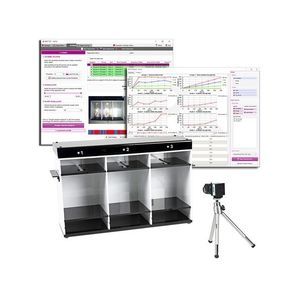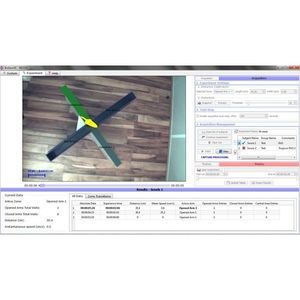
Animal research Vogel test LE865for micefor ratsfor drug development
Add to favorites
Compare this product
Characteristics
- Type of animal
- for mice, for rats
- Applications
- for drug development, for behavioral research, for animal research
Description
Conflict test that has become a standard for fast screening the potential anxiolytic properties of drugs
Many different animal models have been developed for testing the effects of anti-anxiety drugs on behaviour. The most frequently behavioural action is the anxiolytic ability to increase response rates suppressed by delivery of response-dependant punishment.
One of the most popular versions of this technical approach is that developed by R.A. Vogel in 1971 (Psychopharm. (Berl.), 21:1-7). In this model, licking of drinking tube suppression in water-deprived rats, is reestablished by anxiolytic pretreatment. As the model can be used with naive rats in one test session, it has become a standard for fast screening of anxiolytic activity of drugs.
Operating principle
Our instrument is a fully automated set up fulfilling all the control needs of the Vogel's Test, and allowing test performance in a single and easy to use experimental unit.
The set-up is formed by the animal cage, and a modular control unit that include a shock generator.
The animal cage
The animal cage is made up of black perspex with an upper access door and an electrificable grid floor (stainless steel bars, 4 mm dia., spaced 10 mm); frontal panel & upper door are made of transparent perspex. The drinking tube is installed in one of the box sides; it is provided with a resistive detector for animal approaches to water and allows measuring of water consumption and water loss.
Catalogs
No catalogs are available for this product.
See all of Bioseb‘s catalogsRelated Searches
- Analysis software
- Thermometer
- SpO2 monitor
- Control software
- Digital thermometer
- Laboratory software
- Windows software
- Automated software
- Infrared thermometer
- Monitoring software
- Electronic ventilator
- Acquisition software
- Tracking software
- Non-contact thermometer
- Portable ventilator
- Recording software
- Vital signs monitoring device
- Probe thermometer
- Digital control unit
- Compact pulse oximeter
*Prices are pre-tax. They exclude delivery charges and customs duties and do not include additional charges for installation or activation options. Prices are indicative only and may vary by country, with changes to the cost of raw materials and exchange rates.







